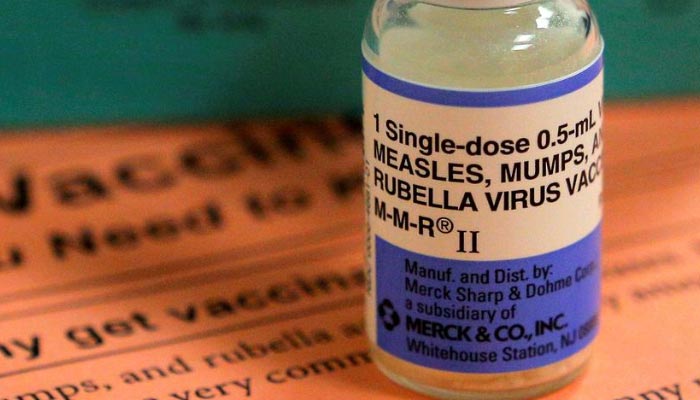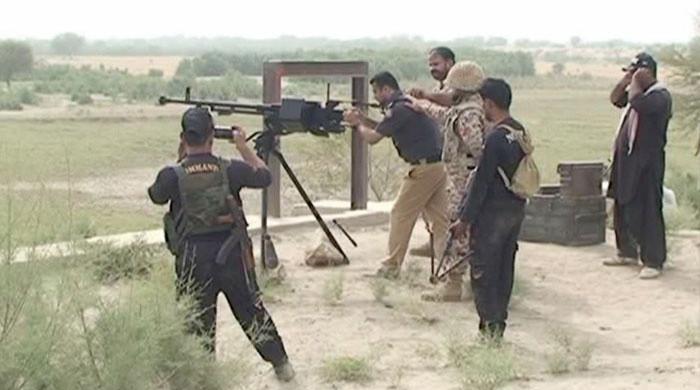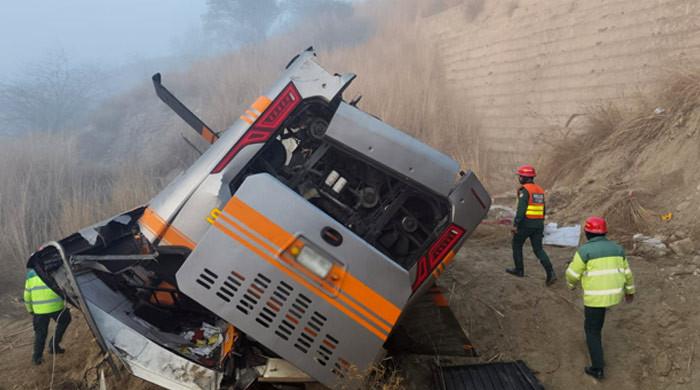Measles outbreak one of probable causes of Keamari deaths: report
First responders to incident, including the DHO, reported very foul smell in affected area during the visit on Jan 26
January 29, 2023

- Final verdict to be given after confirmation from NIH.
- Report says children were unvaccinated against measles.
- About 49 people, including 40 children, were found sick.
A detailed investigation report by the office of Sindh’s director general health stated that the measles outbreak could be one of the probable causes of deaths in the Keamari area of Karachi which claimed about 15 deaths, The News reported Sunday.
However, a final verdict could only be given after confirmation from the National Institute of Health (NIH), Islamabad, where blood samples had been sent for analysis.
“As many as 49 people were found sick in the area, of which 40 (81%) infected people were in the age group of less than 11 years. All were unvaccinated against vaccine-preventable diseases, including measles. During active search in the community, the investigation team observed cases of suspected measles,” said the report, adding that on the basis of the investigation, measles outbreak could be the cause of deaths, but this needs to be confirmed by the NIH.
The report stated that the children's deaths include nine girls and six boys, who may have died due to measles.
On the other hand, first responders to the incident, including the district health officer (DHO), reported a very foul smell in the affected area during the visit on January 26, said the report, adding that all the infected persons were living in the surrounding area (10 to 20 feet) of factories of rubber, plastic, stone and oil.
According to the residents of the affected area, a sudden surge of “shortness of breath” cases had surfaced after the start of the factory on January 5.
“Around 26 (53%) cases have been reported from six families. After the closing of factories (January 26), the team and residents observed an absence of foul smell in the infected area during a visit on January 27. So, on the basis of the above findings, an environmental cause, ie the presence of toxic gases, could not be ruled in the deaths,” reads the report.
The report also states that the most affected group was children between two and four years, whose most common symptoms were fever, cough and shortness of breath.
Other symptoms included pneumonia, redness of eyes, burning of eyes, itching in eyes, headache, nausea, dry mouth, dizziness and abdominal cramping. Of the 49 who exhibited any of these symptoms, 26 were living in six houses close to the factories.
In their initial investigation report, the investigators had suspected that burning shredded tyres for the extraction of iron from iron ore and melting plastic had caused respiratory distress, sore throat and fever in dozens of people in Ali Muhammad Goth who had inhaled the toxic fumes for several days, leading to the deaths in the area.
The authorities said that a total of six factories were closed down by the authorities, while over 20 factory owners had locked down their illegal factories operating in the area and fled fearing being arrested by the police.
The Sindh Health Department officials who visited the area again, along with other investigators, said that in addition to toxic gases, complications of measles outbreak could also be a probable cause of death of people, but added that the initial signs and symptoms reported in the deceased were fever, sore throat, shortness of breath and respiratory distress, leading to deaths of 18 people within a few days.
“The suspected cause includes the emission of gases from the nearby plastic and oil burning and the newly established factory extracting iron from rocks and/or post-measles complications are the leading cause of the reported deaths,” the initial incident report had claimed.
It maintained that the local community had also complained about a foul or irritating smell in the air coming from two of the factories in the residential areas of the village, resulting in suffocation, difficulty in breathing and throat irritation.
The health department officials said that in addition to sealing factories in the residential area of the village, the nearby health facility in the Mawach Goth had been put on high alert and equipped with all the essential medicine and other supplies to provide all the necessary treatment to patients visiting the outpatient departments.
“A round-the-clock camp has been established in the affected area providing medical services to the affected people. A sufficient medical staff has been arranged for the camp, and field activities through the Director General Health Services Sindh, and Director Health Services Karachi,” said the officials, adding that all the essential medical supplies for the camp and health facilities had also been ensured.
In addition to that, round-the-clock availability of an ambulance service had been ensured in the area, while a referral system had been put in place to shift serious patients to the Murshid Hospital and the Dr Ruth KM Pfau Civil Hospital Karachi for providing treatment and admission in isolation ward or ICUs if needed. Random samples for suspected measles were collected and sent to the NIH, added the report.
“A mobile X-ray van with TB specimen collection was arranged in the area, while COVID-19 sampling was also started in the area,” said the report, while health education officers of Karachi were mobilised and deputed to report to the Keamari DHO and schedule or conduct awareness sessions among the community with the support of lady health workers.
Similarly, an epidemiology team of Field Epidemiology & Laboratory Training Programme fellows had been deputed in the district/area through the DG Health Sindh to investigate the exact cause of the incidence and to collect detailed in-depth information about the deceased.
At the same time, a team from the Sindh Environmental Protection Agency had been requested to be on board and play their role in detecting the possible cause of the sudden deaths in the area, said the report.
“Police Surgeon Dr Summaiya has been requested to investigate the causes of any further deaths, if any reported in future, by carrying out autopsies of the dead bodies,” added the report.
On the other hand, health department officials said in response to a suspected measles case and death in Qasim Ali Shah Mohalla in Mawach Goth (adjacent to Ali Mohammad Goth) that a ‘Measles Mop-Up Activity’ in coordination with the Expanded Programme on Immunisation was conducted in both areas, where a total of 172 children were provided measles vaccine or booster doses.
Similarly, 16 men, 30 females and children were examined by the health department’s physicians who had been complaining of fever and sore throat. X-rays of 32 people were carried out, of which five were suspected to have tuberculosis. Moreover, 13 samples of measles were collected and sent for diagnosis, while 48 COVID-19 tests were also conducted.









